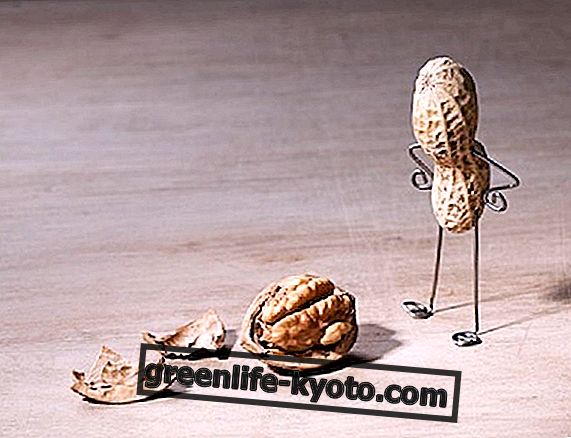Dioscorides is considered the first author of antiquity who developed a pharmacological botanical treatise. His treatise " De Materia Medica ", still today, is used as a model in the drafting of contemporary herbaria.
Dioscorides Pedanio Anazarbe in Cilicia, 40 AD ca - 90 AD ca
Greek physician, botanist and pharmacist, Dioscorides practiced in Rome at the time of the Emperor Nero. Very little is known about his life. It seems that he studied medicine and pharmacology in Tarsus, the provincial capital near his country, where it is possible to trace the presence of a tradition of writings on medicines, which preceded its activity by about a century; and which continued for over a century after his death. He was a friend of Roman senators, for this reason, he may have become a Roman citizen as a prize for his military services. Where he performed these services and if, as a doctor, he actually took part in military actions, he is completely uncertain. His references to places visited strongly suggest that he was a garrison at some point on the eastern border and that the time span of his stay in service was not very extensive.
The thesis of a long military career and travels through the Roman Empire, behind a legionary banner was certainly not compatible with his research in medicine and botany. Once withdrawn from service, probably at the request of the Roman governor of Cilicia, Lecanio Basso of whom he was a friend and who animated a lively cultural circle, he wrote an encyclopedia in five books in which he gathered all the notions that at that time had about curative action that the substances (about a thousand) from the animal, vegetable and mineral kingdom had on the human body. The date of his death, like that of his birth, is unknown.
Dioscorides and his Materia Medica ( Perì yles ìatrikes )
Dioscorides was the first to systematize the traditional botanical-herbal knowledge, handed down until then orally, and accumulated over the centuries by herbalists, doctors or simple herb collectors. For this reason Dioscorides is remembered as a herbalist and botanist, rather than as a doctor. His goal was to give the doctor or the pharmacist the opportunity to choose the right plant for therapeutic purposes. De Materia Medica is a herbarium that is developed in 5 books, written in Greek. These volumes, which describe approximately 625 species of plants or products of plant origin, 85 species of animals or substances derived from them and 50 of minerals, constitute the most complete descriptive review of simple medicines of classical antiquity.
Compared to his predecessors, Dioscorides registers plants, not following an alphabetical order, because in this way he would not have been able to highlight the relationships between these and the organs to be treated, but structuring them on the basis of therapeutic properties . Its classifications therefore follow a pharmacological and utilitarian criterion .
Each book deals with a group of herbs and plants, of which it provides the name, the botanical description and their therapeutic use, the habitat (the indication of the environment of growth or finding) the properties, the parts (drugs) used, the methods of preparation (oils, ointments, herbal teas, etc.) and preservation (solvents and preservatives to maintain the therapeutic virtues over time) and finally the dosage ie the method of use.
What he provided is a manual for doctors, but also for those who want to heal themselves with herbs: a detailed and often extremely accurate description of plants, based above all on their external morphology. Dioscorides, in fact, used to worry about meticulously describing roots and leaves, the periods of flowering, as well as the size, shape and color of each flower, seed or fruit.
Dioscorides: the luck of Materia Medica over time
The great authority that De Materia Medica immediately enjoyed and the complexity of its internal structure, throughout history, stimulated the production of a large quantity of compendiums, reworkings and herbariums. From the date of its publication the work has been translated and much appreciated in Europe and the Near East, in the Arab world. The oldest illustrated manuscript known of this treatise is from the 6th century. AD (also known as the Code of Giuliana Anicia, from the name of the Byzantine princess who had it executed shortly before 512 AD) and was translated from the Greek, first in Latin and then in Arabic in the IX century.
Thanks to the work of Dioscorides, the doctor was able to recognize the plants and to select for his purposes only those of quality and for this reason he had a profound influence in the history of medicine. On the model of Materia Medica, illuminated manuscripts were elaborated during the Middle Ages: the first Herbari or also called Giardini della Salute, which aspired to overcome the wealth of Dioscorides' work and in which the plants of the northern flora were also inserted.
The illustrations are believed to have been added at a later date and that originally the treatise was not illustrated, this would be demonstrated by the absence of any reference, in the dioscorideo text, to the images. The illustrations that accompany the plant and allow their identification were carried out by medieval illuminators and proved particularly useful as, until then, there was no scientific norm or system of botanical nomenclature and pharmacopoeia. The work was so successful that it was still used fluently in the 1700s.












